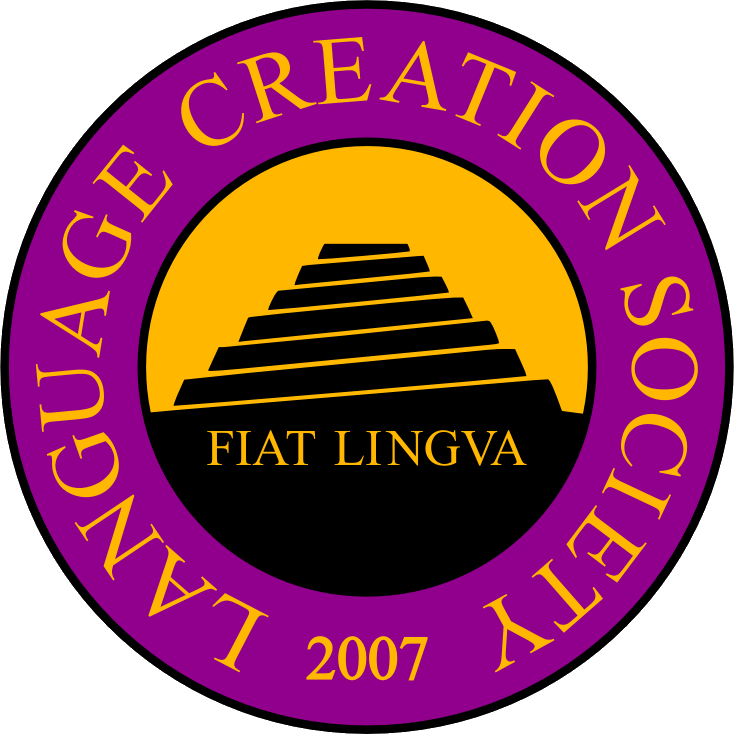dLCC 2021
The first digital Language Creation Conference (dLCC) was live streamed on March 6th and 7th, 2021. While the conference did’t have the same feel or opportunities for socialization that an in-person conlanging conference would have, it was great to hear from some of our peers on a number of different topics.
The conference recordings are available on the LCS YouTube channel (also embedded below) where anyone interested can watch or comment. You can follow commentary about the conference on social media by searching for posts with the #dLCC and #conlang tags to make all related posts easier to find for those looking for them. The conference schedule and list of speakers and presenters (along with their abstracts) can be found below the embedded videos.
dLCC Schedule
All times listed are in the Eastern Standard [GMT -5] time zone.
| Saturday, March 6, 2021 | |
| 10:00–10:50 | Equipment set up. Speakers ensure screen sharing and audio/visual work. |
| 10:50–11:00 | Welcome and opening remarks |
| 11:00–11:30 | Quantification for Conlangers Logan Kearsley |
| 11:30–12.00. | Lost English: Generating Words that Weren’t Quite Jeff Lilly |
| 12:00–12.20. | Developing a Non-Human Conlang: The Example of C’ą̂ą́r Yâm Alexa Hailman |
| 12:20–12:30 | Break |
| 12:30–13:00 | Questioning Clefts: The Story (and Struggle) of Revising Content Questions in Skerre Douglas Ball |
| 13:00–13:30 | Creating New Verbs in Okuna: Motion, Means, and Manner Matt Pearson |
| 13:30–13:50 | The Exponence of Grammatical Number in Kamya Keras Saryan |
| 13:50–14:00 | Break |
| 14:00–15:00 | Panel: Benefits of Natlang Study Groups for Conlangers Logan Kearsey, Kevin Walker, Aidan Aannestad, Wrik Chatterjee |
| 15:00–15:10 | Break |
| 15:10–15:40 | MAGN(idea) = big: colocations for lexicon building William S. Annis |
| 15:40–16:10 | Aramteskan, and the Language of Scent in Real and Constructed Languages Lauren Gawne and PM Freestone |
| 16:10–16:30 | Building Collective Imagination in the Klingon Language Community Jack “DeSDu'” Bradley |
| 16:30–16:40 | Break |
| 16:40–17:00 | Ayiwa: A (Failed?) Experiment in Controlled Pidginization Cohen A. Root |
| 17:00–18:00 | The Conlang Database Project Matthew McVeagh |
| Sunday, March 7, 2021 | |
| 10:00–10:30 | Equipment set up. Speakers ensure screen sharing and audio/visual work. |
| 10:30–12:00 | Relay Presentation |
| 12:00–12:10 | Break |
| 12:10–12:40 | Brave New Words: Literary Glossopoesis as a Narrative Framework in Science Fiction Literature Professor Israel Noletto |
| 12:40–13:10 | Experimental Linguopoetics Arises: Phonaesthetics vs. Phonaethemics–Could have been Tolkien wrong? Jan Havliš |
| 13:10–13:30 | The Art of Discovery Brian B. Bourque |
| 13:30–13:40 | Break |
| 13:40–14:10 | Techniques for Script Development Cheryl Bowman |
| 14:10–14:40 | Bad Writing Kenan Kigunda |
| 14:40–15:00 | The Linguisitics of Zelda: Examining the Possible Conlang Clues and Linguistic History of the Various Hyrulian Civilizations Baron Dipitous |
| 15:00–15:10 | Break |
| 15:10–15:30 | Reoxe | Designed as an International Auxiliary Language Ronit Avadhuta |
| 15:30–16:00 | Where Does Writing Come From? Jason Hagler |
| 16:00–16:20 | The Qapekbehtian Scripts Benjamin Young |
| 16:20–16:30 | Break |
| 16:30–17:30 | Orthographies: Enriching Language Creation and World Building Margaret Ransdell-Green |
| 17:30 | Closing Remarks |
dLCC Speakers and Abstracts
The titles of presentations have been hyperlinked to a copy of the presentation slides for download (if available). Speaker names in their respective bios may be hyperlinked to their individual websites.
Logan Kearsley |
Quantification for ConlangersThe behavior of quantifiers is rarely discussed in presentations of conlangs–which is unsurprising, as it is rarely discussed in natlang grammars, as well. This lack of attention can give the impression that quantification just works the same way everywhere—but this could not be further from the truth! In this presentation, I will cover the differing ways that quantification can be encoded, how different languages handle quantifier ambiguity, and surprisingly places where quantification shows up with examples from natlangs and my own conlangs. |
| Logan Kearsley lived in multilingual Belgium for three years as a child, but didn’t realise other languages were cool before moving back to the anglophone United States, where he started conlanging at a still-young age and eventually studied Russian in high school. He has a Bachelor’s degree in Computer Science and Masters in Linguistics, and has had the opportunity to study a wide variety of languages while working in a research lab for language pedagogy and developing software for teaching and learning foreign languages at the university level. | |
Jeff Lilly |
Lost English: Generating Words that Weren’t QuiteUsing a database of Proto Indo-European roots and affixes, and a summary of the sound changes that have taken place between PIE and modern English, I present an open source program to generate English words that do not exist, but might have. Both pronunciation and spelling suggestions are offered, reflecting English’s idiosyncratic orthography. The words often seem whimsical or odd, but in fact are no stranger than many actual English words. The program is offered as a tool for creators of alternate history or lost words and names. |
| Jeff Lilly is a computational linguist specializing in speech recognition. From 2011 to 2016, he was part of the core team that developed Amazon’s Alexa voice assistant and has contributed various patents and papers on the minutiae of lexical and morphological processing. He lives in Seattle with his wife, cat, bird, and frog. |
|
Alexa Hailman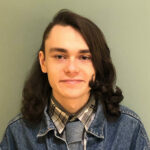 |
Developing a Non-Human Conlang:The Example of C’ą̂ą́r YâmAlexa presents on their process in developing their non-human conlang C’ą̂ą́r Yâm, spoken by a fictional bird species, and gives advice on how to make a believable non-human conlang. |
| Alexa Hailman is an undergraduate student at the University of Michigan studying Linguistics and Near Eastern Studies. They are particularly active in online conlang circles such as Reddit, and they enjoy both a priori and a posteriori conlang projects. | |
Doug Ball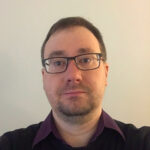 |
Questioning Clefts: The Story (and Struggle) of Revising Content Questions in SkerreCleft sentences might have a plausible cross-linguistic characterization as complex sentences with, minimally, a copula-like predication (even without an actual copular verb or particle) and either a nominalized or adnominal clause. These sentences are usually truth-conditionally equivalent to simple sentences with nearly the same linguistic material. In some languages, cleft sentences are a common way within which content questions — questions about certain portions of sentences (aka wh-questions) — are expressed. A few years ago I decided that my conlang Skerre would join the ranks of languages that express content questions via cleft sentences. In the talk, I plan to first motivate why I thought it was a good idea to use clefts for content questions in Skerre — mostly based on typological correlations, but with a brief note about the relationship between information structure and syntax. Then, I will discuss how I sought to determine precisely how such clauses should be formed in Skerre. This has been more of a struggle than expected, because the cross-linguistic work I usually use to inform my conlanging decisions either has yet to be done or is just coming out. So the talk will also share how I have tried to overcome this challenge to my usual conlanging mode of operating. |
| Doug Ball has been conlanging since 1994, working predominantly on the language Skerre. He is currently part of the linguistics faculty at Truman State University in Kirksville, Missouri (since 2009), where he teaches classes on various areas of theoretical linguistics, Polynesian languages, and, unsurprisingly, constructed languages. | |
Matt Pearson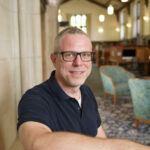 |
Creating New Verbs in Okuna:Motion, Means, and MannerIn this presentation I discuss Leonard Talmy’s (1985) formative typological work on lexicalization patterns. This work focuses on uncovering cross-linguistic differences in how motion events are encoded, with respect to the realization of basic cognitive categories such as Figure, Ground, Path, and Manner. Using Talmy’s research as a framework for my discussion, I present some strategies for forming verbs in my conlang Okuna, focusing on a class of derivational prefixes which encode (a) the manner in which an event is carried out, (b) the degree to which an event is carried out, or (c) the type of object being manipulated to carry out the event. (These prefixes have analogs in natlangs, including manner and classifier affixes in some languages of North America.) In addition to illustrating how these verb-deriving prefixes work, I also discuss how they evolved (both intra- and extra-fictionally) from noun incorporation and converb constructions. The goal of this talk is to provide a case study in how language creators can use the grammatical resources of their conlang to expand the vocabulary naturalistically and organically, in ways that depart from the familiar derivation patterns of English. Reference |
| Matt Pearson is a professor of Linguistics at Reed College, where he teaches courses on syntax, typology, and semantics. His research deals primarily with word order, clause structure, and tense/aspect in Malagasy and other Austronesian languages. While in graduate school in the 1990s, he designed the Hive language for the NBC TV series Dark Skies. More recently he has contributed to a forthcoming volume on conlanging in the classroom, Language Invention in Linguistics Pedagogy (Oxford University Press). He has been working on his personal artlang Okuna for the past 25 years. | |
| Keras Saryan |
The Exponence of Grammatical Number in KamyaHere I discuss the ways in which information regarding grammatical number is conveyed in Kamya: Nouns display a morphological distinction between general and plural number. Unmarked general nouns are able to express either a semantic singular or plural (kudi ‘book(s)’) and a semantic plural may optionally be marked by suffixation (kudida ‘books’). However, this overt marking is considered ungrammatical when a quantifier or cardinal numeral is present (gara kudi ‘a lot of books’, iz kudi ‘three books’), though a small number of pluralia tantum are invariably found with overt plural marking (amda ‘people’). Verbs obligatorily agree for semantic not morphological number with subjects, with singular being unmarked and plural again indicated by suffixation (kavuk/kavukar ‘dwell (sg./pl.)’—certain verbs also exhibit stem In general, morphological plural marking on nouns is somewhat uncommon not only for subjects but also for non-subjects and is typically used to provide disambiguation or focus. For non-subjects, semantic number may be recoverable even when not morphologically marked on the noun due to the presence of the indefinite article (şi kudi ‘a book’), which strongly implies a singular reading with a bare noun. Though this may also be found with count nouns as a partitive, albeit ordinarily alongside overt plural marking (şi kudi(da) ‘some books’). With the definite article, however, semantic number is often ambiguous (na kudi ‘the book(s)’) but may be inferable from context or real-world knowledge. For example, with naturally plural body parts, the definite article often implies plurality (na kaw ‘the hand(s)’). |
| Keras Saryan is a linguistics researcher who works mainly on harmony, disharmony and sound change. He has been constructing languages for several years now and, in his spare time, also enjoys learning natural languages, reading non-fiction, travelling as well as playing and watching football (association not American). | |
Logan Kearsley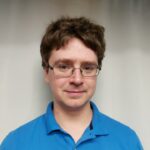 Kevin Walker Aidan Aannestad Wrik Chatterjee |
Panel: Benefits of Natlang Study Groups for ConlangersEarly in 2020, Kevin Walker started a weekly discussion group to help motivate him to study Inuktitut. Since then, the group has grown to five regular members (all conlangers), and covered Inuktitut, Tlingit, Yale, Coptic, and Sandawe. This panel will discuss how this group has benefited its members both in our conlanging pursuits and more broadly in terms of career growth, mental health, etc., and how similar activities might be beneficial to others. |
|
Logan Kearsley lived in multilingual Belgium for three years as a child, but didn’t realise other languages were cool before moving back to the anglophone United States, where he started conlanging at a still-young age and eventually studied Russian in high school. He has a Bachelor’s degree in Computer Science and Masters in Linguistics, and has had the opportunity to study a wide variety of languages while working in a research lab for language pedagogy and developing software for teaching and learning foreign languages at the university level. Kevin Walker‘s bio will be posted soon. Aidan Aannestad is one more name on the long list of people who discovered linguistics through Tolkien, and he’s been conlanging ever since that seventh grade discovery. He’s learned a lot about linguistics since then, though, and now is about to finish a master’s degree in it. He holds himself (and sometimes others) to a very high standard of realism in his work, and he’s always striving to get a more complete perspective on the enormous variety found in the world’s natlangs – with a special interest in tone and information structure. He also speaks Japanese, and will happily discuss its history and mechanics for hours with anyone interested. He’s been on-and-off a member of a number of conlanging communities, and these days is most likely to be found in the r/conlangs subreddit as u/sjiveru. Wrik Chatterjee‘s bio will be posted soon. |
|
| William S. Annis |
MAGN(idea) = big: collocations for lexicon buildingAfter a brief overview of lexical collocations (big idea, deep thoughts, sheer audacity, attract attention, piece of advice, etc.), I will introduce a formal way of describing them, Lexical Functions.[1] The majority of the talk will be a tour of a few major LFs, giving both natural language and my own conlang examples. In particular, MAGN (intensity, “strong tea”), BON (common praise, “fruitful analysis”), VER (genuine, “legitimate demand”), along with modifiers of them, will be a major focus. With additional time, the structural LFs can be touched on, and the possibilities of some functions to not just describe a lexicon, but to generate interesting lexical possibilities, can also be explored. |
| William S. Annis works in IT in Madison, WI. When not sharing his cats with coworkers over teleconferencing apps, he gardens, plays banjo, cooks, reads a lot, and has recently taken up weaving as a rage-absorbing hobby. He has been conlanging since the early 1980s. | |
Lauren Gawne PM Freestone  |
Aramteskan, and the Language of Scent in Real and Constructed LanguagesRecent work on language and olfaction has demonstrated that there are languages that have far richer scent-based lexicons than languages like English (Majid & Burenhult 2014, Poulton 2020). Some languages encode scent in grammar, such as the scent classifier in Cha’palaa (Floyd, San Roque & Majid, 2018). However, there are many potential scent-based linguistic features that have not been attested. For example, there is no documented evidential in any known language exclusively used for olfactory evidence (Aikhenvald 2004). In this presentation we discuss the Aramteskan language, featured in the fantasy novels The Darkest Bloom (Freestone 2019) and Crown of Smoke (Freestone 2020). These novels depict a fictional society where smell is culturally the most important sense. This is an a priori constructed natlang, however it diverges from the established natural language typology specifically in relation to the lexicalisation and grammaticalisation of scent. In this regard the constructed Aramteskan language exhibits ‘weak naturalism’ (Peterson 2020; 261) in the pursuit of a creative approach to enriching worldbuilding (Sanders and Schreyer 2020; Coon 2020). We outline three strategies used to create a scent-focused language, including a rich verb lexicon, nominal classification, and olfactory evidentiality. None of these are attested in the existing typology of human languages. This creative approach to the application of typology helps illustrate what is possible, but not existent, in natural languages. We demonstrate how this constructed language gave depth to the fictional world of this series, and helped to motivate key plot points. References |
|
Lauren Gawne is a linguist at La Trobe University in Australia. In her day job Lauren works on gesture as well as the grammar of Tibetan languages in Nepal. Lauren is also co-host of the Lingthusiasm podcast, and makes conlangs for both fun and fiction. PM Freestone writes young adult fiction. Her debut duology began in 2019 with Shadowscent: The Darkest Bloom and concluded in 2020 with Shadowscent: Crown of Smoke. She is now working on a new series. |
|
Jack “DeSDu'” Bradley |
Building Collective Imagination in the Klingon Language CommunityA presentation about the boom in literary creation by the Klingon-speaking community which has occurred since the beginning of the pandemic. |
| Jack “DeSDu'” Bradley is an artist and MFA student at Columbia College Chicago. He received his BA in Visual and Media Arts from Université Laval. Fluent in Klingon, he translates regularly and has written several books of poetry as well as an epic fantasy novel in the Warrior’s Tongue. Since 2019, he maintains an active Klingon-language Youtube channel, jatlhDeSDu’. His linguistically-based art explores the intimacy of grammatical structures, the poetry of unfamiliar glyphs, and the ineffable. His languages, though works in and of themselves, are often presented through external text-based works, performance pieces, and sound art. He is also pursuing a parallel career in language construction for popular media. | |
| Cohen Root |
Ayiwa: A (Failed?) Experiment in Controlled PidginizationDuring the years 2001 and 2002, the venerable David J. Peterson conducted experiments regarding the way that morphology and syntax emerges in pidgins. To do this, he took a handful of volunteering college students and gave them a created lexicon and prompted them to communicate using this list. The results in both instances were interesting in their own right and can be read about on his webpage dedalvs.com, and inspired me to attempt a variant of the experiment for myself to see if I could produce similarly interesting results. Although it is by no means helpful in a scientific sense, the language that resulted is still worth analyzing both for enjoyment and as further evidence that if properly conducted a similar experiment could possibly create helpful results. |
| Cohen Root is at time of writing a fourth year undergraduate Philosophy, Religious Studies, Sociology, and Anthropology student at Elmira College. They began conlanging in 2016 after being initially exposed to the concept by David J. Peterson’s and Christophe Grandsire-Koevoets’s blogs on tumblr. This is the first language-related project that they have shared with more than close friends. Their personal projects focus on developing realistic fictional languages for fantasy settings that address the average shortcomings of fantasy worldbuilding and experimental/philosophical languages aimed at exploring hypothetical and personal belief systems. | |
Matthew McVeagh |
The Conlang Database ProjectThis talk will introduce the Conlang Database Project, using slides. Topics will include:
|
| Matthew McVeagh first conlanged in my teenage years in the 1980s, and have recently taken it up again: “I have long been interested in languages, but conlanging adds an element of creativity which I greatly appreciate having in my life. My teenage conlangs were of all kinds but my focus now is on experimental languages which push back the boundaries of what is seen as possible, especially in grammar and vocabulary. I am also heading up the Conlang Database Project which aims to record in one place as many conlangs of which there is evidence as possible. I studied linguistics at university and in fact for years beforehand, and I’ve learnt French, German, Latin and Italian at school and bits of others besides including Spanish, Portuguese, Dutch, Russian, Esperanto and Indonesian.” | |
Prof. Israel Noletto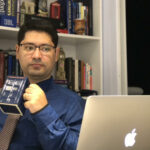 |
Brave New Words: Literary Glossopoesis as a Narrative Framework in Science Fiction LiteratureIn this presentation, I propose to work on the premise that the creation of languages to feature in science fiction literary works is frequently used as a narrative framework, which means they are utilised as an ancillary device to tell a story, rather than occasional flourishment. As it happens, that implies that literary fictional languages, even in the cases with only a few invented words, have an elaborative function that conveys meaning as an effective alternative to simple description or other narrative tools, such as exposition. To demonstrate how wide-ranging the use of literary glossopoesis has been, I propound a historiographical study that traces the incidence of fictional languages in literature back to the 1500s until contemporaneity. In support of my thesis, I intend to present a three-case study: (1) Ursula K Le Guin’s The Dispossessed (1974); (2) George Orwell’s Nineteen Eighty-Four (1949); (3) Suzette Haden Elgin’s Native Tongue (1986). Although mostly not fully-fledged languages, the glossopoesis in the three texts play the role of a secondary narrative framework either in addition to the regular traditional prose or even in contradiction thereof. The painstaking analysis of those instances of literary glossopoesis reveal that an in-depth References |
| Israel Noletto is a professor of English at the Federal Institute of Piauí. Currently a doctoral student at the Federal University of Piauí. His research interests are English for speakers of other languages, literature in English, Science Fiction and Literary Glossopoesis. | |
Jan Havliš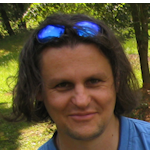 |
Experimental Linguopoetics Arises: Phonaesthetics vs. PhonaesthemicsCould Tolkien have been wrong?Linguopoetics, or a branch of linguistics dealing with creating languages (linguopoiesis), is a potentially rich field for experimental linguistic research. In our work, we have chosen and tested a hypothetical concept of phonaesthetics, originated outside of linguopoiesis, but introduced to it by John R. R. Tolkien, linguist and linguopoet himself. Phonaesthetics hypothesises that there is a universal causal relationship between the sound and meaning, i.e., the meaning of a word is determined by its sound, and vice versa. This represents so called strong formulation. Later, the weak formulation was introduced that it applies only to pairs of opposite / mutually extreme meanings. Another hypothesis to the relation between sound and meaning, the phonaesthemic hypothesis by John R. Firth, postulates ex-post mental association of a certain sound or group of sounds (a phonaestheme) with a certain meaning. We have undertaken a study probing both these hypotheses by means of asking respondents to assign different meanings to one of the pair of phonetic sequences (and other way around) in different arrangements to test as many potential consequences of these hypotheses as possible. We have applied phonetic sequence & meaning pairs from natural languages, created languages and randomly generated and attributed sequences. Our results suggest that although in the limited number of cases the respondents’ preference of a certain phonetic sequence to meaning is non-random (potentially a phonaesthemic phenomenon), in most cases, regardless of the origin, no causal relation between the two could be found, ruling thus the phonaesthetic hypothesis out. |
| Jan Havliš was born 1970 in Brno, Czechoslovakia, and nowadays lives with his wife, two cats, and more than 3500 books in a small house in Nebovidy, Czech Republic. He is a reader (senior lecturer) in bioanalytics and proteomics at Masaryk University in Brno. He was unknowingly conlanging since 7, and seriously conlanging from 1995, when he joined his friend Radek Zahradnik and they co-operated on development of Arkian, their first collaborating conlang. In 2010 – 2013 he made his BSc in general linguistics, since 2014 he teaches language construction & interlinguistics for Faculty of Art at Masaryk University. Since 2017 he started his PhD in general linguistics at Faculty of Art of the same uni with topic language creativity. |
|
Brian B. Bourque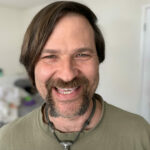 |
The Art of DiscoveryI approach conlanging a little differently than those whom I have met over the years. I want my languages—Lortho and Dhakhsh—to feel like archaeological finds on a distant world; discoveries that inspire and give a sense of awe to the reader as I make each new find. I want the reader to want to learn more. Even as I describe new words I’ve created, I present them as new discoveries that the public can realize with me. Moreover, these discoveries make it possible to leave an unexplained aspect of the language as it is without feeling pressured to accurately describe a grammatical nuance or why a word might have an odd definition. I apply this concept of discovery consistently in both Lortho and Dhakhsh and it has helped me create the world in which my languages are spoken and written. I wish to present how I use the Art of Discovery to maintain my passion for the languages and, in turn, pass on that passion to the readers—hopefully yearning for more. |
| Brian B. Bourque is a Linux systems administrator living in Los Angeles with his wife and two daughters. He is the creator of the language Lortho—a conlang he created for purely aesthetic and artistic reasons—and the naming language Dhakhsh, which is starting to gain some roots and mature into an official conlang. During his free time he enjoys practicing calligraphy (especially for his conlangs), working on computers—from troubleshooting to scripting—and spending time with his family. He received an Associate of Arts degree with a focus on Modern Persian from the Defense Language Institute in Monterey, CA. | |
Cheryl Bowman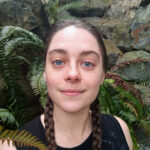 |
Techniques for Script DevelopmentAn orthography triumphs when it is visually appealing and best represents the people and culture of the language. I have enjoyed designing scripts for myself and for others and I would like to show you what I’ve learned by bringing you through my entire development process. We will study iconic writing systems both constructed and natural, and discuss selecting & constraining shape sets, utilising a script sketch, tips for shape generation, character/sound assignment, and the magic of evolving your work. We will answer questions like, “How do I design a script that looks distinct and cohesive?” and, “Why doesn’t my final sample excite me as much as the individual characters did?” and, “How do I make this writing system look more alive?” Perhaps you have a specific vision of the script you want to produce, or maybe only a vague sense of the feeling you want it to evoke. The principles I am presenting will help you navigate from ideas to fully fledged scripts that can function as the best version of themselves. |
| Cheryl Bowman is an artist and worldbuilder, currently living on beautiful Vancouver Island, British Colombia. She possesses some formal linguistic training in phonetics and phonology and is enjoying studying Scottish Gaelic. She has relished creating scripts since the day her Dad introduced her to a classic cypher, and hopes to inspire others in their own script design. Cheryl works part time as a baker and spends the rest of her time playing music, reading books, wearing cloaks, stewing in her longtime worldbuilding project, and playing PokemonGo with her husband. |
|
Kenan Kigunda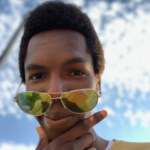 |
Bad WritingIn this talk, I’ll discuss the horrific but beautiful orthography of my conlang Zevy, which has a rather weird correspondance (or rather, lack of correspondance) between letters and sounds, and contextualize it in the larger question of how to build a realistically “bad” writing system, the drawbacks and advantages of shallow versus deep orthographies in real life and in conlanging, and compare the history of the development of the Zevy orthography to that of English and French, both in-world (oh the historical drama) and as a conlanger, looking at how my own journey of being an English speaker learning French impacted the development of Zevy’s orthographical quirks. |
| Kenan Kigunda first became a fan of language when his seventh-grade French teacher transformed the subject that had once been his nemesis into something joyous and fun; playing with words both real and made up (but then… aren’t they all?) has been a hobby and passion ever since. What’s funner, he wonders, than exploring all the weird and wonky ways that humans communicate with each other? And what better way to do it than to learn a language, or make one yourself? It’s a question that Kenan has been answering through wordsmithing since he was a teenager, starting from his first days of lurking on forums like the Zompist Bulletin Board, and one that he continues through his conlang Zevy today. Hearing the sounds of the world is one of the things he loves best about the cosmopolitan landscape of New York City, where he lives, and his love of syntax serves him equally well in his life as a software engineer. And since conlanging has yet to stop bringing him joy, he has no plans to throw it away. For more on Kenan’s work, check out his conlanging website. | |
Baron Dipitous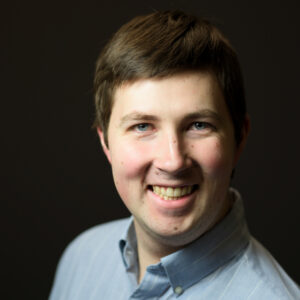 |
The Linguistics of ZeldaExamining the Possible Conlang Clues and Linguistic History of the Various Hyrulian CivilizationsWhile the Legend of Zelda series of video games does not as yet seem to have a fully-developed conlang, there are several examples of possible naming languages & even the beginnings of a few conlang sketches. Some Zelda fans have developed these sketches & alphabets further into various fan works. Some have even endeavored to further develop some of these languages into full conlangs (such as “Hyrulian” and “Gerudo”). But to my knowledge, no one has yet attempted to compile and analyze every bit of linguistic data from all civilizations represented in the Zelda games. I have been looking at the official material found in the games to see what we can learn about the various civilizations as they developed over the centuries represented in the official in-universe timeline. The latest game in the series, Breath of the Wild, is particularly noteworthy for its use of words & names from previous games, as well as its portrayal of the language spoken by the desert-dwelling Gerudo tribe. Though the creators & publishers of Zelda games don’t tend to focus on the overarching timeline or narrative between different entries, I think the analytical approach I take to the hints of a developing linguistic history found in the series would not only be of interest to those familiar with this popular video game series, but it can also serve as an example of how conlangers can further develop any fictional world or culture using only a handful of helpful clues. |
|
Baron Dipitous [if spoken, rhymes with “serendipitous”] was introduced to conlanging through a capstone linguistics course as a college undergraduate in 2016. There, he created his first conlang, Tɛkɾɪd. Since then, he has worked as a full-time editor for an SEO company, pursued and completed his master’s degree in Library Science, and currently works part time as an academic librarian. This relatively new-found interest in conlangs has permeated several of Baron’s hobbies, including Dungeons and Dragons, creative writing, and–as will soon be evident–video games. He is particularly interested in hidden histories and lore, and has created two wiki sites for the lore some of his favorite indie games.
Baron has also recently become a writer and director for an indie production studio called Banner Media. You can hear many words and phrases from his Tɛkɾɪd conlang in Banner Media’s first audio production: “Almost Home.” He has also created a second conlang for another upcoming project for Banner Media.
|
|
Ronit Avadhuta |
Reoxe | Designed as an International Auxiliary LanguageOne of my favorite pastimes is to learn new languages, especially from media like songs, movies, and shows. I grew up in a household in which my parents were consistently speaking a mixture of English, Hindi, and Telugu with a ton of code-switching. Because of this, I found that I would occasionally insist with all my might that a Telugu word existed in Hindi. Even with English, I remember initially saying “full-stop” instead of a period due to the fact my family lived in the UK for a bit. I do believe that this however was certainly a blessing in disguise; being exposed to a lot of different languages from an early age helped me soak in new languages soon after. In elementary school, I went to a Hindi school to formally learn to read and write Hindi. My mom would tease me that I would use lots of non-colloquial words that would be archaic and incoherent all the time. It soon became apparent that to learn a language, I would have to hone in on its everyday nuances. Having adopted this newfound perspective on language acquisition, I set out to learn languages such as Chinese, Japanese, and Hindi. Soon, I developed an interest in examining the individuality and disposition of each and every language. Being able to understand and become a part of fluid conversations also incentivized me. As a result, I began to tackle languages like Japanese with a rational mindset. I started to learn Japanese in seventh grade; I pieced together a combination of online resources such as JapanesePod101 and Mango Languages, in addition to reciting song lyrics by heart. I approached Korean the next summer in a similar manner. I had found out learning Mandarin Chinese through my school aided a lot with writing and vocabulary in these two languages and in real life as well. When I went to Kansas City, MO 2019 for Destination Imagination, I was able to utilize my Mandarin knowledge to communicate with international competitors directly from China. I am proud of how far I’ve come and aspire to keep improving my skills to connect with even more people. It was not long before I soon became immersed in linguistics, IPA, and semantics thanks to my love for languages. With this newfound technical view on language as well as a practical, real-world view on language acquisition, I set out to create a conlang named Reoxe (starting in 6th grade). I contacted some experts in the field to get feedback on my designs for Reoxe to be an international auxiliary language. Reoxe is primed to be easy-to-learn, with its own vocabulary and grammar. My intention is that anyone should be able to learn the language from just reading my book, Reoxe: Constructed International Auxiliary Language, and hopefully a bit of practice. |
| My name is Ronit Avadhuta and I am a High School Junior from the Massachusetts Academy of Math and Science at WPI. I am passionate about everything from Math to Languages. This includes studying a number of languages including Chinese, Japanese, Korean, etc and publishing my book on Apple Books “Reoxe: An International Auxiliary Language.” Check it out here: https://books.apple.com/us/book/reoxe/id1549347394. Learn more about me on my custom website: http://users.wpi.edu/~ravadhuta/ | |
Jason Hagler |
Where Does Writing Come From?Where does writing emerge from? In Tolkein’s mythos, writing is invented by Rumil of Valinor before being improved by Feanor. While this deliberate act of careful and intentional creation is very much in harmony with Tolkein’s mythic intent, did the first writing systems really emerge in similar acts of creation? Ongoing research into the earliest writing in societies such as Ancient Egypt, Sumeria, and Early China suggests that the process is more complex than that, with writing being an unintended product of the need to organize and record. In particular, my own research examines the inter-relations between material, institutional organization, and language that give rise to writing, particularly in the Early Chinese context. This paper seeks to take insights into the process by which writing systems develop and examine them in the context of conlanging, conscripting and conworlding, as well as considering the potential of conlanging, conscripting, and conworlding as part of the investigative and academic process. This presentation will present this model alongside a discussion of the ways that several real world ancient scripts work through the example of a hypothetical society, the Tlowat, as they invent writing. |
| Jason Hagler is a PhD student focusing on State Formation in in Early China at Penn. Their research focuses on the emergence of complex systems such as writing, and bureaucracy, as well as the ways in which culture, ideas, practice, and environment influence each other through comparison of processes in Mesopotamia and Early China. | |
Benjamin Young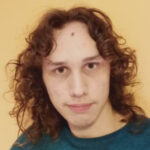 |
The Qapekbehtian ScriptsThe Original Qapekbehtic script in the world of Tjer would go on to have many descendants as it spread and slowly diverged. From the curvy abugidas to the cryptic logographies, my goal with the Qapekbehtian scripts was to create a vast array of interesting mechanisms from one proto-system, mimicking the process we see in natural languages. In this talk I will explain how I achieved this and explain the constructed history of this script family. |
| Benjamin Young is a Conlanger and Worldbuilder currently studying at the International School of Latvia. He grew up travelling from country to country and has always been fascinated with the way people spoke and the cultural differences therein. This would amalgamate in 2017, when 7th grade Ben would discover the world of language creation, and naturally become obsessed with it. He would go on to begin work on the world of Tjer, a project he intends to continue working on for many years to come. For him, Conlanging and Worldbuilding have become some of his biggest outlets for expression, so he does his best to put every bit of passion and love he has into his creations. | |
Margaret Ransdell–Green |
Orthographies: Enriching Language Creation and World BuildingOrthography creation and development can be rewarding in their own right, but this process can also enrich and add to worldbuilding, in the context of the historical conworld-internal development of a conlang or language family. Orthography creation in tandem with conlanging can add to the depth of both writing system and language. Outside the bounds of the conlang itself, orthographies can also reflect an association with history, politics, and sociocultural events, which parallel the histories of orthographies in our own world. In this way, conscripts tell stories about a world and its peoples. In this presentation, I illustrate these points using examples from conlangs and conscripts (both my own and others’), as well as examples of orthographies and orthography development processes from the real world. |
| Margaret Ransdell–Green is a PhD student studying language documentation at the University of Hawai‘i at Mānoa in Honolulu. She lived in Alaska for most of her life before moving to the tropics in 2014. She has been conlanging since she was eight years old and world-building almost as long. Today, 8+ of her personal conlangs coexist in the world setting of Aeniith [ˈaeniːθ]. Ransdell-Green loves experimenting with different grammatical features in my conlangs and connecting language to culture and world setting. Her other interests include archery, metalsmithing, gaming, calligraphy, writing, singing, hiking, and traveling. | |
dLCC 2021 Relay
The dLCC 2021 Relay had so many participants that we divided it up into two rings; both rings started with the same starter text. You can download the relay PDFs and audio files below.
